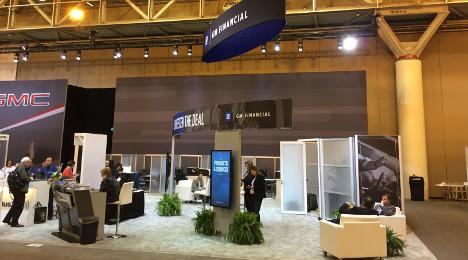The latest TransUnion Industry Insights Report found that 80 million consumers held a vehicle lease or retail installment contract as of the close of 2016. Analysts determined the figure marked the highest level TransUnion has observed since at least the third quarter of 2009, as approximately 4.3 million additional consumers last year took out what can be clearly classified as vehicle financing.
However, SubPrime Auto Finance News asked TransUnion’s Jason Laky to consider whether the funds consumers are using to acquire a vehicle are coming from other sources such as personal loans, which reached a new milestone at the conclusion of 2016 with total balances topping $100 billion for the first time ever.
Laky is senior vice president and automotive and consumer lending business leader for TransUnion, so his jurisdiction is both the auto finance and personal loan markets. Laky approached this difficult question by first explaining the primary reasons personal loans exist.
“For the prime or better consumers, the biggest use of the personal loan but not the only one is debt consolidation,” Laky said. “A lot of lenders are promoting to use a personal loan to pay off credit cards or other high interest loans you have at a lower interest rate and a predictable monthly payment that an installment gives.
“The second use that’s more prevalent in the non-prime and subprime areas where consumers don’t have as much financial security, those loans tend to be used for more immediate needs, whether it’s large repairs or a bridge loan for some education, something like that. The loan sizes are a little smaller and the use tends to be much more utilitarian,” he continued.
Laky explained that TransUnion’s data cannot shed specific light on what purpose consumers use personal loans; if they are in fact the monies used by a consumer to make the necessary down payment for an auto finance company to complete underwriting of the contract. But Laky also acknowledged there has been rumblings of this practice happening more often.
“One thing we’ve certainly started to pay attention to is we have heard it mentioned out the marketplace this idea of using the personal loan to make the down payment or to cover negative equity,” Laky said. “We don’t see in the TransUnion credit file the actual use of the personal loan. We don’t know where the funds go, but it’s certainly a possibility.
“We’ve heard a couple of lenders mention that it may be going on out there. It’s certainly something we may go ahead and look at studying,” he continued. “From a lender’s perspective, I’m sure that whenever you have a consumer that takes out a personal loan in order to cover some gap in the auto financing, it’s probably a flag that’s a higher risk consumer than maybe you think.”
The amount of risk finance companies, banks and credit unions are already holding in the auto finance market still is growing significantly. TransUnion reported total auto financing balances climbed to $1.11 trillion at the close of 2016. Analysts indicated the total balance grew 8.3 percent during 2016, slower than the average growth rate of 11.0 percent between 2013 and 2015.
The average vehicle financing balance per consumer also rose slightly to $18,391, up from $18,004 in Q4 2015.
“For the second consecutive quarter, total auto balances had a year-over-year growth rate below 10 percent, reflecting the slower growth that we are seeing in new car sales,” Laky said in a news release from TransUnion.
“In the third quarter, auto originations declined year-over-year for the first time in six years,” he continued. “Prime plus and super prime originations continued to grow in Q3 2016, indicating lenders are beginning to shift their focus away from the riskiest segments, where we’ve seen strong competition among lenders that has put pressure on risk adjusted margins.”
TransUnion determined that originations declined 0.8 percent to 7.46 million in Q3 2016, down from 7.52 million in Q3 2015. Subprime originations experienced the largest decline (down by 3.2 percent), and prime plus (up 1.8 percent) and super prime (up 1.7 percent) originations grew in the third quarter of 2016.
Analysts went on to mention the auto delinquency rate reached 1.44 percent to close 2016, a 13.4-percent increase from 1.27 percent rate in Q4 2015. They added auto delinquency is at its highest level since the Q4 2009 reading of 1.59 percent.
More details about personal loans
As mentioned previously, TransUnion’s Industry Insights Report confirmed personal loans reached a new milestone at the end of last year with total balances topping $100 billion for the first time ever. While younger consumers have played a major role in the growth of these lending products, analysts found that, contrary to popular belief, mature borrowers are leading the charge on these loans.
TransUnion added that total personal loan balances grew $14 billion between year-end 2015 and year-end 2016, reaching $102 billion. The number of consumers with a personal loan continued to climb steadily and ended 2016 at the highest level since at least Q3 2009. In Q4 2016, 15.82 million consumers had a personal loan.
TransUnion noted baby boomers comprised 32.8 percent of all consumers with a personal loan when 2016 ended, followed by Gen X (31.6 percent) and millennials (26.6 percent). In Q4 2013, millennials were just 23.5 percent of personal loan users, but their share has grown over the past three years to reach 26.6 percent at the end of 2016.
“There is a perception that personal loan growth has been driven by younger consumers, but our data clearly indicate that these loans are appealing to older borrowers,” Laky said in the same release. “We believe some of this growth is occurring because interest rates may be lower than other type of loans for certain baby boomer segments.”
Analysts went on to mention the personal loan delinquency rate was 3.83 percent in Q4 2016, the highest Q4 reading since Q4 2013 and up from 3.62 percent in Q4 2015. Originations, viewed one quarter in arrears, declined for the second consecutive quarter. Originations dropped 5.7% from 3.75 million in Q3 2015 to 3.54 million in Q3 2016.
“We’ve observed a decline in non-prime lending that we attribute to mid-year FinTech funding challenges and regulatory uncertainty in advance of the election,” Laky said. “We believe that the personal loan market is stabilizing, and have seen balances grow across risk tiers through the end of the year.”
About a year ago, GM Financial restructured internal management to strengthen its AmeriCredit division — the original piece General Motors acquired almost seven years ago.
Since that point, GM Financial has since become the captive for the parent automaker. However, AmeriCredit remains a crucial cog in GM Financial’s operation, remaining as it has since its inception back in 1992 as a finance company that caters to the subprime market.
Just before GM Financial released its fourth-quarter and full-year results, SubPrime Auto Finance News connected with Paul Gillespie, who is the senior vice president for AmeriCredit sales and credit operations.
“I will say 2016 was very much for us like 2015 from an originations standpoint in the AmeriCredit channel, which was in line with our target,” Gillespie said. “We had not made any real material changes to our underwriting or pricing strategies so we’ve pretty taken the approach of ‘We’ll take what the market will give us on our terms.’ I think given to how we fit into the bigger picture of GM Financial, that is the approach we’re most comfortable with.”
The exact figures GM Financial released later showed that 12 percent of its North American originations fell into what the company classified as near-prime; contract holders with FICO scores between 620 and 679. The company indicated that it originated $1.065 billion worth of contracts in this tier during the fourth quarter.
What GM Financial classifies as deep subprime — customers with FICO scores below 620 — constituted 15.3 percent of its North American Q4 originations or $1.359 billion.
“We have dedicated sales, credit and management now to the AmeriCredit channel. It really has paid some dividends,” Gillespie said.
“We’ve seen some growth over the second half of the year. We are hopeful that will be a trend that will continue this year. Again, it’s really going to be on our terms. We’re not looking to grow artificially. We’re looking to grow along with our credit and pricing strategy dictating that,” he continued.
Gillespie emphasized that AmeriCredit’s relationships are solely with non-GM dealerships. Most of the little more than 8,000 stores in AmeriCredit’s active network are franchised operations while there are some independent dealerships, “but we’re pretty selective on how we quality independent dealers,” Gillespie said.
“It’s a little trickier space to manage but we do have those relationships and some are very good. But our primary volume and focus is on non-GM franchised stores,” he added.
While the company’s Q4 volume in near-prime and subprime softened slightly year-over-year — less than 6 basis points for both categories — Gillespie pointed out what’s encouraging about the characteristics of the paper that is coming into the portfolio.
“The one thing we’ve seen is consistency year-over-year with respect to through-the-door application scores as well as funded contract scores. We feel good about that,” he said.
“On the flip side of that, we have seen the market start to shift a little bit more to longer terms, even some lenders out there doing 84-month terms, and shifting their volume to 75-month terms. We don’t do any 84-month (contracts), and we do very little 75-month (contracts),” Gillespie continued. “We try to hold the line on term given the fact that this is subprime. Again, this fits our strategy of taking what the market will give us on our terms. That’s the nice part of being a part of GM Financial is we really don’t have an originations number we have to hit. This gives us a little bit of luxury relative to some of our competitors.”
Another advantage Gillespie mentioned is AmeriCredit’s access to the auto asset-backed securities market. Having been in business certainly helps, he said.
“We’ve had a long-standing relationship with the ABS investment community,” Gillespie said. “We’ve always had a great track record with the investment community. I think if you were to speak to any of them they would tell you we’ve always been very transparent in how we manage our business and what we share about our performance and what’s going into the portfolio.
“Having said that, our strategy is to continue to fund the AmeriCredit channel through the ABS market. At the same time, we’re going to be very consistent in what we’ve done in the past with them and maintain the relationships that we’ve built with the ABS market,” he went on to say.
The latest ABS assessment from S&P Global Ratings backs up Gillespie’s claims. Analysts said when evaluating the AmeriCredit Automobile Receivables Trust 2017-1, “Our expectation that under a moderate stress scenario, our ratings on the notes will not decline by more than one rating category from our preliminary ratings (all else being equal) over a 12-month period.”
It’s assessments like that one that triggered Gillespie to remark, “I don’t want it to sound like bragging, but I think we have one of the best relationships in the ABS market of any lender out there.”
With the first quarter nearly at its halfway point, SubPrime Auto Finance News closed its conversation by asking Gillespie about what he plans to watch closely as the year unfolds.
“The one that is top of mind for everybody is watching what happens with interest rates. After a long period of stagnation with interest rates, we’re starting to see a little upward climb, so making sure that we adjust our pricing as necessary to maintain our profitability targets,” Gillespie said.
“Secondarily, auction prices and used-car valuations, there’s a number of sources out there that have forecasted that we’re going to see declining valuations. So we’ve got to be cognizant of that and make sure if that is truly happening that we’re adjusting our approach to underwriting to reflect that,” he continued.
“Lastly, the continued expansion of term on contracts,” Gillespie went on to say. “We need to make sure that if that continues, that we have the proper balance of how much extended term we really are doing versus how much we’re uncomfortable with doing. It’s a little bit of a juggling act. It’s something we’re going to be watching closely, but our preference would be to stay where we are right now around that 72-month number and not migrate much north of that.”
Both Enterprise Car Sales and Auto Financial Group (AFG) recently highlighted how much success they’re having with credit unions.
Enterprise Car Sales said it generated a record $575 million in financing volume to more than 31,000 credit union members during 2016. The 2016 amount represents a 15-percent increase from the previous year.
Meanwhile since September, AFG said it has signed seven new credit unions to its balloon lending program, resulting in a reach increase of 1,563,615 new consumers.
Officials mentioned Enterprise Car Sales’ record auto origination volume is following the overall trend of ongoing financing growth in the credit union sector. New reports show credit unions have increased total automotive finance market share to 19.6 percent, up 2 percentage points from a year ago.
In addition, officials added used-vehicle financing offers increased profit potential for credit unions with average used-vehicle finance amounts reaching a record high of $19,227 in the third quarter of 2016.
In fact, Enterprise Car Sales said it has helped generate $10 billion in origination volume during the last 30 years with more than 1,000 credit union partners nationwide.
“Last year’s record-setting credit union loan volume is further evidence of the value both Enterprise and our credit union partners place on the importance of customer service,” said Beth Wheeler, corporate director of business development at Enterprise Car Sales.
“Complete customer satisfaction is the cornerstone of our business, and our credit union partners share that commitment with their members,” Wheeler continued. “As a result, we’ve developed a three-decade partnership that continues to grow stronger and more productive year after year.”
And credit unions appreciate how Enterprise Car Sales structures its retail system, which includes a seven-day/1,000-mile repurchase policy, a 12-month/12,000-mile limited powertrain warranty and a year of unlimited roadside assistance.
“It’s reassuring to partner with a company that cares about customer service as much as we do,” said Sam Whitehurst, chief executive officer and president of Summit Credit Union of North Carolina, which has partnered with Enterprise Car Sales for several years.
“Enterprise provides the same kind of individualized care and attention that we give our members day in and day out,” Whitehurst continued. “When we refer our members to Enterprise for their used vehicle purchases, they frequently come back remarking on the ease of their car-buying experience.”
AFG’s fall growth figures
As mentioned, Auto Financial Group (AFG), a provider of financing products for credit unions and banks said it has signed seven new credit unions to its balloon lending program, resulting in a reach increase of 1,563,615 new consumers. These new organizations include:
— Gold Coast Federal Credit Union
— St. Cloud Federal Credit Union
— PA Central Federal Credit Union
— Laramie Plains Community Federal Credit Union
— Straits Area Federal Credit Union
— Valley Federal Credit Union of Montana
AFG emphasized the company is “thrilled” to partner with these credit unions, representing combined assets of more than $1.3 billion across eight states. In addition to these credit unions, Ignition Financial also signed on as a partner.
“We welcome these financial institutions to the growing AFG family,” AFG chief executive officer Richard Epley said. “Residual based financing is at an all-time high in the U.S. and we’re excited that these institutions have chosen our program.”
Epley added Auto Financial Group expects continued growth through the first quarter as the company seeks to provide their unique financing products and solutions to financial institutions across the U.S.
AFG’s Balloon Lending program can provide institutions with a walk-away, residual based, balloon loan program that is fully insured, and where AFG takes 100 percent of the residual value risk and completely manages the end of term process.
Executives can learn more at www.autofinancialgroup.com/products/balloon-lending-program.
Automotive and asset finance software solutions provider White Clarke Group recently released its latest publication titled, “Global Technology Report 2017: Auto Finance in the New Digital Ecosystem.”
The company highlighted the report, and accompanying summary video that can be viewed here or at the top of this page, draws important conclusions from discussions between technology experts and senior delegates from the world’s largest captive finance providers at White Clarke Group’s annual Auto Captives Summit, which took place in London last November.
The summit identified four main elements that are driving the new digital ecosystem. These elements, which the report describes in detail, include:
• The changing nature of the customer base;
• The transformational nature of new technologies such as artificial intelligence, chatbots and blockchain
• The accelerating pace of technology causing disruption to traditional business models
• The growing threat from cybersecurity and ever-growing regulatory and security demands
Brendan Gleeson, group chief executive officer of White Clarke Group, summed up delegates’ findings.
“We are in an age of ‘connected intelligence’, surrounded by a range of products and services which link together to make up a digital ecosystem,” Gleeson said. “We are experiencing an explosion of innovation, which has a profound impact on how we interact with each other, and how businesses build and maintain a relationship with their customers.
“To succeed in the new ecosystem, organizations must adapt fast –learning new skills, staying abreast of new technology and developing new models for the delivery of finance to avoid the threat from disruptors,” he went on to say.
To download a free copy of “Auto Finance in the New Digital Ecosystem,” go to www.whiteclarkegroup.com.
Specialty auto finance company Exeter Finance Corp. announced on Monday that it appointed company veteran Brad Nall to be chief financial officer in a move that was effective Feb. 1.
Nall joined Exeter in July 2012 and has more than 25 years of experience in the consumer finance industry. He has held numerous senior roles during his career within budgeting and strategic planning, financial reporting, project management, business development, mergers and acquisitions, whole loan sales and structured finance.
The company highlighted Nall also has a strong background in the areas of operations, risk management, credit and pricing, accounting, control and compliance. Prior to Exeter, he spent 12 years at Citi's auto finance and personal loan businesses in various finance roles.
“I am pleased and honored to serve in this role for Exeter Finance,” Nall said. “During my tenure here, I have seen the company grow and thrive beyond expectations. I look forward to contributing to the continued growth of the organization as well as serving our dealers and customers in the most effective manner possible.”
Exeter chief executive officer Jason Grubb added, “Brad’s extensive financial experience, industry knowledge and exhaustive commitment to our company's success will be invaluable as we continue to execute our business plan and strategic initiatives.”
And the company apparently will be executing that strategy under the assumption that there is not a subprime “bubble” inflating. Grubb agreed with assertions made by the three credit bureaus at the outset of the Vehicle Finance Conference hosted by the American Financial Services Association last month in New Orleans. Grubb participated on the CEO panel to close the event and touched on the topic.
“Our 2016 vintages performed better than 2015,” said Grubb, who also is a member of AFSA’s board of directors. “Even though we’ve seen a deterioration in the wholesale market where our severity is worse but our frequency is less. Most people grabbed more yield in 2016 so they’ve been able to save their margins even though we’ve seen a decline in the wholesale market.
“There are headwinds obviously,” he added. “Hopefully a lot of us have been originating with lesser LTVs and provisioning for the losses. We can add an adjuster for higher depreciating vehicles and other measures that can be taken to offset some of this.”
Credit Acceptance Corp. posted year-over-year income increases even as company leadership acknowledged the difficulty in keeping originations coming through its dealer network as well as intensifying regulatory demands.
This past Friday, a few days after sharing its fourth-quarter and full-year financial results, Credit Acceptance said it received a civil investigative demand from the Federal Trade Commission on Nov. 7. Credit Acceptance said in a filing with the Securities and Exchange Commission that the FTC is seeking information on the company’s polices, practices and procedures in allowing dealers to use GPS starter interrupters on vehicles.
“We are cooperating with the inquiry and cannot predict the eventual scope, duration or outcome at this time,” the company said in the filing. “As a result, we are unable to estimate the reasonably possible loss or range of reasonably possible loss arising from this investigation.”
When the company released its fourth-quarter and full-year results, an investment analyst spotted an increase in its general and administrative expense of $2.7 million, or 27.6 percent. Credit Acceptance said it was primarily as a result of an increase in legal fees.
The analyst pressed and asked, “What was the increased legal fees that you guys noted in the press release?”
According to a transcript of the quarterly conference call posted by Credit Acceptance, senior vice president and treasurer Doug Busk replied, “Nothing specific there. We just have a bunch of issues ongoing that are consuming increased amounts of legal resources.”
Nevertheless, Credit Acceptance reported that its Q4 consolidated net income came in at $87.6 million, or $4.33 per diluted share, up from $80.0 million, or $3.84 per diluted share, during the same period a year earlier.
In all of 2016, the company generated $332.8 million, or $16.31 per diluted share, in consolidated net income, marking a rise from the 2015 figures that were $299.7 million, or $14.28 per diluted share.
Credit Acceptance also mentioned its adjusted net income, a non-GAAP financial measure, for Q4 climbed to $96.7 million, or $4.79 per diluted share. A year earlier, it was $83.3 million, or $4.00 per diluted share.
For the year, the company’s adjusted net income totaled $360.6 million, or $17.67 per diluted share; a rise from $309.8 million, or $14.77 per diluted share, compiled during 2015.
Originations and dealer relationships
Credit Acceptance finished 2016 with originations softening a bit during the fourth quarter. But for the full year, the company’s origination figure jumped by 10.9 percent.
The company secured 74,340 contracts in Q4; a figure 5.6 percent lower than the 70,179 originations posted during the year-earlier quarter. For all of 2016, Credit Acceptance took in 330,710 contracts, up from 298,288 booked in 2015.
The quarterly drop-off in originations prompted the opening question during Credit Acceptance’s conference call. Perhaps a reason why is the company posted double-digit gains year-over-year in quarterly originations for seven consecutive periods, including a high of 41.3 percent in Q3 of 2015.
“I think the first factor I would look at is the competitive environment,” Credit Acceptance chief executive officer Brett Roberts said. “That certainly makes things challenging. We're not getting any improvement there, but I don’t think it got any worse either.
“So I think what you saw in the fourth quarter is — as we talked about in prior calls — our strategy when the environment is competitive is to focus on growing the number of active dealers,” Roberts continued. “It is difficult to grow volume per dealer when it is very competitive. But as I think we alluded to several quarters ago, as the base of dealers gets bigger, it becomes more difficult to grow that at a fast enough rate in order to offset the decline in volume per dealer, and to a lesser extent, attrition. So that is what we're seeing right now.”
Roberts also mentioned another factor that might have impacted how much paper Credit Acceptance brought into its portfolio during Q4.
“I think in the fourth quarter, the other thing that came into play is, we addressed some of the negative variances that we have seen in recent originations. When we do that, it causes our initial collection forecast to decline, which means we advance the dealers less money. So that has a one-time impact on volume per dealer, and also on attrition,” Roberts said.
Credit Acceptance closed Q4 with 7,260 active dealers. The company considers a dealer to be active when a dealership has received funding for at least one contract during the period. The investment community wondered if Credit Acceptance might hit a ceiling for its active dealer network at perhaps 7,500.
“I think it’s too early to call it a ceiling. It's definitely a point of resistance. If the competitive environment, obviously, if that changes, that will change everything. But if we assume that the current state continues for the foreseeable future, I would look at it, at this point, as a point of resistance, and not a ceiling,” Roberts said.
More details of incoming contracts
The average contract amount and term Credit Acceptance added into its portfolio in Q4 hit new highs. The company reported the average amount financed was $18,218 and average term was 53 months.
For perspective, Credit Acceptance pointed out that back in 2007, those metrics were $13,878 and 41 months.
“We write terms all across the spectrum, from six months to 72 months, so the average term is a function of the mix. We do not have any current plans to increase the maximum term beyond 72. So the average will just be a function of our pricing strategies and where we see the most opportunity,” Roberts said.
“As we’ve talked about in prior calls, over a period of time when I first started, we would only write a 24-month loan. And we accumulated data and extended it out to 30, and accumulated more data, and we walked our way out to 72 months over a period of about 25 years. So we have been careful about it. And we’re comfortable with the terms that we offer now,” he continued.
Three parts of internal changes
As Roberts referenced, Credit Acceptance indicated that the company enhanced its methodology for forecasting the amount and timing of future collections on contracts through the utilization of more recent data and new forecast variables. The company spelled out three components involved in the implementation of the enhanced forecasting methodology that went into effect as of Oct 31, including:
• Decreased the forecasted collection rates for contract assigned in 2015 and 2016 and increased the forecasted collection rates for contracts assigned in 2011 through 2013
• Reduced forecasted net cash flows by $1.8 million, all of which related to indirect dealer contracts
• Did not have a material impact on provision for credit losses or net income
“We periodically refresh the model. So it is based on all the information we collect, both at loan origination, and as the loan moves through the servicing process,” Roberts said. “So it is really just mostly an update of the data, a refresh there. And also we redo the actual scorecard and re-weight the variables based on what seems to be most predictive.
“So it is something we do periodically, it’s more of a routine update. And really, the numbers were not all that different from what we had before,” he added.
Don Foss mentioned
Credit Acceptance announced back on Jan. 4 that founder Donald Foss, who most recently served as the company’s chairman, decided to retire as an officer and director. At that time, the company indicated the board had no intention to fill the chairman’s role or to fill the vacancy on the board created by Foss’ retirement. Credit Acceptance added the board of directors will be led by lead director and chair of the audit committee, Thomas Tryforos.
When the topic was broached during the Credit Acceptance conference call, Roberts reiterated the same company intentions.
“No, there are no plans at this point to have a chairman. We have a lead director. But we don’t need a chairman, and we have no plans to replace him,” Roberts said.
Wise F&I, which offers a full suite of finance and insurance products, announced on Monday that its products are now available to automotive retailers operating on the Reynolds and Reynolds dealership management system (DMS).
Dealers can leverage Wise F&I offerings through the product rating and booking (PRB) tool within a Reynolds DMS. The company explained this seamless access includes Wise F&I’s full suite of branded protection products, including GAPWise, WiseCARE, TIREWise, WiseTVP, THEFTWise and KEYWise.
With online capabilities such as eRating and eContracting, Wise F&I said this new access will provide accuracy and efficiency for the dealer and additional customer support for the vehicle buyer.
“Throughout 25 years in the automotive industry, Wise F&I has focused on providing the best automotive finance and insurance protection products to our clients and consumers,” said Matt Croak, president of Wise F&I.
“We’re pleased to be working more closely with Reynolds and Reynolds and expect this new enhancement between Wise F&I and the Reynolds Product Rating and Booking tool will enable our mutual dealership clients to more easily, efficiently, and accurately offer our branded protection products to their customers,” Croak continued.
In other company news, Wise F&I recently completed integration with OptionSoft Technologies that can allows dealers to access of Wise F&I products through one of the leading menu providers in the automotive software industry.
Wise F&I now has its full suite of branded products including GAPWise, WiseCARE, TIREWise, WiseTVP, THEFTWise and KEYWise, all available on the OptionSoft menu. The integration cab provides up-to-date pricing, speed and accuracy for the dealership.
Croak highlighted that Wise F&I and OptionSoft integration in turn can deliver a better vehicle buying experience.
“We are always looking at ways to create efficiencies and to better support the car buyer,” Croak said. “OptionSoft supports that through our products direct availability on their menu system.”
RoadVantage expands dealer training
RoadVantage recently launched what the company believes is a cutting-edge dealership training program optimized to help stores sell to today’s Internet-educated shoppers.
“Today’s dealership customers are a new breed of savvy — their shopping habits have evolved radically in the last decade,” said Garret Lacour, founder and chief executive officer of RoadVantage. “Dealership practices must evolve accordingly.”
RoadVantage is offering F&I and sales operations training in partnership with The Academy, an Austin, Texas-based training center that has developed a curriculum specifically designed with today’s Internet-educated consumer in mind.
“The Academy's uniquely developed process recognizes that a shift in mentality and focus is necessary in the face of today's more informed customers,” said Tony Dupaquier, director of The Academy. “Post-training surveys indicate that students who attend The Academy experience higher closing ratios, profit margins and CSI scores.”
The RoadVantage Dealer Training Program includes workshops for personnel at all levels within F&I and sales operations. The comprehensive training covers a wide range of topics and can take place onsite at the dealership, or at The Academy’s state-of-the-art training facility in Austin, Texas.
Self-paced online training modules are also offered.
“Everyone knows consumers are researching and shopping online, so it’s time we equip dealers with the tools they need to effectively reach them,” Lacour said. “This is a big initiative of ours. Last fall we created free online videos, available to all dealers nationwide, to drive consumer awareness of F&I programs before they go into the dealership to purchase their vehicle.
“Alongside our free online dealer videos, our new dealer training program is another example of how we are working to help dealers provide a better customer experience,” Lacour went on to say.
The free dealer videos are available on the RoadVantage YouTube channel.
More information on the RoadVantage Training Program can be found at http://roadvantage.com/training.
The latest dealer survey orchestrated by KeyBanc Capital Markets showed participants ended up being evenly split when describing credit availability to their customers.
According to the survey conducted in December, KeyBanc found that 50 percent said credit availability remained intact during the fourth quarter with the other 50 percent stating auto financing loosened.
That availability appeared to help dealers generate more gross profit in their F&I offices. KeyBanc reported that 80 percent of participating dealers enjoyed a rise of about $50 per unit year-over-year during Q4 with the remaining stores saying their F&I gross per unit stayed relatively flat.
What dealers told KeyBanc reflects how important credit availability is. Cox Automotive chief economist Tom Webb reiterated the point, too, when he conducted his quarterly conference call at the beginning of January.
“Certainly No. 1, retail credit is the lifeblood that keeps the used-vehicle market moving,” Webb said. “It has been extremely favorable throughout this recovery. I think it pulls back a little bit this year, but still to the net positive. We couldn’t have gotten any better than where we were.
“I think interest rates overall will be showing a bit of an uptick. But as the only saying goes, ‘It’s the availability of credit, not the cost of credit,’” he continued. “If there is a little bit of steepness in the yield curve, that actually promotes lending. I do believe portfolios will continue to perform extremely well because of stability in the labor market. We’re actually getting some wage increases, which I think will be better in 2017 than they were in 2016. That’s a very positive thing for portfolio performance. When those loans are securitized, I think they’ll still offer investors a very nice risk-adjusted reward; therefore money will flow.
“Overall I’m looking at it to be a positive market this year,” Webb went on to say.
Dealers evidently agree with Webb as KeyBanc’s survey showed the upbeat sentiment for performance of their used-vehicle departments.
“Used-car trends remain favorable as used-car gross per unit appears to have bottomed out as an average of 60 percent of respondents reported an increase of more than $50 in the quarter,” KeyBanc said.
“And we believe we are approaching a near-term inflection point based on our used-car gross per unit index trend, in part driven by easing year-over-year comparisons,” the company added.
While not mentioned in the KeyBanc report, Webb briefly touched on another part of the dealership operation that has to do with financing. While not giving a specific figure, Webb said the impact of an uptick in interest rates likely means the cost of a dealer’s floor plan is likely to edge higher, as well.
“Most dealers do a very good job of following the velocity theory. They do maintain that inventory turn so it shouldn’t be a major burden,” Webb said. “It would only be a burden for those dealers who have not caught up to the fact that you really do have to turn your inventory.”
Formed through thousands of conversations with the nation’s leading dealership principals and finance companies, EFG Companies finalized four predictions and recommendations for 2017.
President and chief executive officer John Pappanastos summarized the results on Tuesday, saying these insights reflect an air of cautiousness for the F&I market.
But Pappanastos added there are many options for the industry to successfully navigate an uncertain business climate for a prosperous year.
“Even though the election is over, we continue to see a murky forecast for the F&I market moving forward,” Pappanastos said. “Consumers clearly want a new — and at least partially online-buying process. This trend has significant impact for the F&I industry across retail and lending channels.
“We also expect to see credit tightening on the consumer side and a foreshadowing of reduced auto manufacturer incentives for dealers, which will impact their margins,” he continued.
“Finally, we don’t believe federal regulatory oversight will diminish to the level that is being hyped. So, we strongly believe compliance will continue to challenge dealers and lenders,” Pappanastos went on to say.
“All that being said, we believe that the changes transforming the auto industry will create unique opportunities for dealers and lenders to leverage as they look to expand their business,” he added.
Four other executives from EFG Companies elaborated about the thoughts Pappanastos mentioned.
1. Flat volumes, compliance, and customer retention for retail automotive
While Consumer Financial Protection Bureau (CFPB) authority may be up in the air, John Stephens, executive vice president of dealer services, noted that dealers will need to stay the course on compliance for 2017.
“Remember, the Federal Trade Commission (FTC) has jurisdiction over dealers and its operations are not impacted by any potential changes within the CFPB,” Stephens said.
“Analysts are predicting flat unit sales volumes, pushing dealers to maximize their investment by squeezing more profitability out of their F&I operations,” he continued. “Customer retention efforts will increase, prompting dealers to shore up their service drive and fixed operations to deliver the ‘luxury car’ level of service.
In addition, an influx of off-lease vehicles will increase used-car inventory while putting pressure on pricing. Whether purchasing new or used, the customer will be king in 2017,” Stephens went on to say.
2. Return on investment and shorter transaction times key for F&I agents
With dealerships feeling increased pressure, Adam Ouart, vice president of agency services, projected that F&I agents will also experience a trickle-down effect to clearly demonstrate a return on investment for the F&I products they place at a dealership.
“Agents will also feel pressure to help dealers shorten transaction time and pivot their operations to support online transactions,” Ouart said. “Agents will closely monitor their own businesses to keep production levels high and begin focusing more on acquiring new dealership business. “
3. Rising interest rates and portfolio evaluations will challenge finance companies
Regardless of what happens with the CFPB, Brien Joyce, vice president of specialty services, said finance companies will also need to stay the course.
“You don’t stop treating customers right on the off chance that the government might not see your good behavior,” Joyce said. “Increasing interest rates will pressure lenders to tighten lending standards and evaluate other options to protect their loan portfolio outside of APR and loan terms. The same can be said for credit unions and other lenders that offer auto loans directly to consumers.
“I expect more lenders to evaluate how consumer protection products can benefit them from the standpoint of differentiating their institutions from the competition, protecting their loan portfolio, increasing loan volume, and controlling compliance,” he continued.
“In addition, dealers will re-evaluate their lender roster, confirming a broad spectrum of partners that specialize in different credit tiers, and help dealers meet their profitability goals,” Joyce added. “This will put pressure on lenders to evaluate their service model for dealerships and make adjustments to tackle mutual dealer and lender challenges.”
4. Growth and finance company challenges continue for powersports dealers
Although unit sales fell in the second half of 2016, Glenice Wilder, vice president of powersports, is anticipating volume will pick up in February when early income tax refunds arrive.
“There will be a slight growth in the powersports market overall in 2017 with dealers putting greater emphasis on increasing aftermarket income through the sale of F&I products,” Wilder said. “Lenders that remain in the powersports market will want to insulate their loans and may look to offering their own complimentary F&I products.
“As powersports dealers continue to be starved for lenders, up-to-date technology resources, and committed employees, they will pressure their vendors and product administrators to provide outside the box solutions for these obstacles, such as digital F&I services,” Wilder added.
During last week’s industry festivities in the Big Easy, Equifax rolled out solution enhancements with a trio of other service providers — Fiserv, Digital Matrix Systems and Dominion Dealer Solutions.
First, Equifax and financial services technology solutions Fiserv collaborated on an interface between The Work Number provided by Equifax Workforce Solutions and Fiserv's Automotive Loan Origination System. Together, the companies said the solutions can provide faster and more robust income and employment verifications to customers.
Refreshed each pay period, Equifax claims The Work Number is the largest database of income and employment information provided directly from employers and includes records from more than 75 percent of the Fortune 500 companies, including an increasing number of medium-to small-sized employers.
“Fiserv has chosen our income and employment verification solution because it provides instant access to data that can help its customers close deals faster,” said Scott Collins, senior vice president Verification Services at Equifax Workforce Solutions.
“These clients are already using our traditional credit and commercial data and this enhancement will provide a deeper view of a consumer's credit profile and provide a tremendous value to their overall underwriting process,” Collins continued.
Fiserv is one of the industry’s top providers of auto loan origination and servicing systems, completing upwards of 5 million originations on 18 million credit applications on its Automotive Loan Origination System last year alone. The connection to the Equifax database can allow finance companies to secure income and employment data in seconds and help approve applications quicker and limit stipulations.
Charles Sutherland, vice president of product management and strategy within lending solutions at Fiserv, said of the integration, “After surveying the market for a proven partner, it became evident that The Work Number met all of our success criteria.
“Together, these two applications aim to improve the speed and accuracy of consumer originations,” Sutherland continued.
Integration into Digital Matrix Systems
In other company news associated The Work Number, Equifax announced that Digital Matrix Systems (DMS), a leading risk management solution provider, has established connectivity to the credit bureau’s tool to provide income and employment verifications to DMS clients.
Both operations insisted that verifying income and employment can allow finance companies to minimize exposure to fraud. They continued that leveraging data from third-party sources for proof of income can streamline the overall process, resulting in improved efficiency.
Access to The Work Number data will be available through Data Access Point by DMS, a connectivity hub that can offers clients flexibility when using both traditional and alternative data sources.
“We continually survey the market and work with our partners to evaluate new data sources for our clients, and the addition of The Work Number will allow us to provide access to a unique and beneficial data set,” said David Graves, DMS executive vice president.
“DMS and Equifax share a mutual goal — to improve the speed and accuracy of consumer originations,” Graves continued.
Equifax’s Collins added, “Our income and employment verification solution rounds out the DMS offering by enabling instant access to data that can help their clients reach business decisions faster.
“Being in a position to have a more comprehensive view of a consumer's credit profile will help give these lenders greater confidence around credit risk and their customers’ ability to repay,” he went on to say.
Equifax highlights service lane equity mining capability
Furthermore, Equifax also launched availability of PowerLead Offer — a new soft-pull credit-based solution designed for the dealership service lane — that can prescreen customers for potential vehicle financing offers.
John Giamalvo, vice president of dealer services at Equifax, explained that instances where a customer brings a vehicle to the dealership for maintenance or repairs present a unique opportunity to prescreen for additional sales opportunities. Giamalvo noted that PowerLead Offer can enable a service provider to prescreen the customer, either prior to their arrival or on-the-spot, to assess eligibility and terms for a new car firm offer of credit.
When the consumer qualifies, a firm offer of credit can be provided to the customer during the vehicle servicing experience.
“A face-to-face encounter with a customer is a sales conversion opportunity and the introduction of a qualified offer enables the dealership to better maximize every customer touchpoint, even outside the showroom,” Giamalvo said
Dominion Dealer Solutions, a provider of web-based customer relationship management and dealer management system technology, was the first within the industry to adopt PowerLead Offer. The company will leverage the solution as an enhancement to its equity mining platform DealActivator to help increase the unique value it provides to its dealer customers.
“This integration will keep our dealers compliant and their customer’s information secure, while helping to significantly increase the dealers’ equity opportunities in the service lane,” said Alan Andreu, general manager of equity solutions for Dominion Dealer Solutions.
“I am excited that DealActivator can directly offer dealers soft credit pulls with the largest credit provider in the country,” Andreu went on to say.












